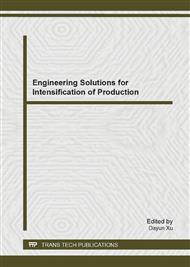[1]
H. Yokokawa, N. Sakai, in: W. Vielstich, Lamm, H. A. Gasteiger (Eds. ), Handbook of Fuel cell Fundamental Technology and Application, vol. 1, John Wiley &Sons, (2003) pp.219-266.
Google Scholar
[2]
S. C. Singhal, Solid Oxide Fuel Cells VI, PV 99-19, The Electrochemical Society, Pennington, JU, USA, (1999) p.39.
Google Scholar
[3]
H. Yokokawa, T. Watanabe, A. Ueno, and K. Hoshino, ECS Trans., 7 (1), 133, (2007).
Google Scholar
[4]
K. Sasaki, S. Adachi, K. Haga, M. Uchikawa, J. Yamamoto, A. Iyoshi, J. T. Chou, Y. Shiratori and K. Ito, ECS Trans., 7(1) 1675 (2007).
DOI: 10.1149/1.2729277
Google Scholar
[5]
R.J. Ong, J.T. Dawley and P.G. Clem: submitted to Journal of Materials Research (2003).
Google Scholar
[5]
S. Taniguchi, M. Kadowaki, H. Kawamura, T. Akiyama, Y. Miyake, and T. Saitoh, J. Power Sources, 55, 73, (1995).
Google Scholar
[6]
J. Nielsen, A. Hagen, Y. L. Liu, Solid State Ionics, 181, 517-52, 4 (2010).
Google Scholar
[7]
H. Yokokawa, N. Sakai, T. Horita, and K. Yamaji, Handbook of Fuel Cells Fundamentals Technology and Application, Vol. 5 and 6, Advances in Electrocatalyst, Materials, Diagnotics, and Durability, W. Vielstich, H. A. Gasteiger, and H. Yokokawa, Editors, John Wiley & Sons, New York, (2009).
DOI: 10.1002/9780470974001.f500037
Google Scholar
[8]
H. Yokokawa, N. Sakai, T. Horita, K. Yamaji, M.E. Brito, and H. Kishimoto, J. Alloys Compd., 452, 41, (2008).
Google Scholar
[9]
S. P. Jiang, W. Wang, Solid State Ionics, 176, 1185, (2005).
Google Scholar
[10]
H. Nishiyama, M. Aizawa, H. Yokokawa, T. Horita, N. Sakai, M. Dokiya, J. Electrochem. Soc., 143 (7), 2332 (1996).
Google Scholar
[11]
S. H. Kim, K. B. Shim, C. S. Kim, J. T. Chou, T. Oshima, Y. Shiratori, K. Ito, K. Sasaki, J. Fuel Cell Sci. Technology, 7(2), 21011 (2010).
Google Scholar
[12]
Y. Xiong, K. Yamaji, T. Horita, H. Yokokawa, J. Akikusa, H. Eto, T. Inagaki, Journal of The Electrochemical Society, 156(5), B588-B592, (2009).
DOI: 10.1149/1.3090169
Google Scholar


